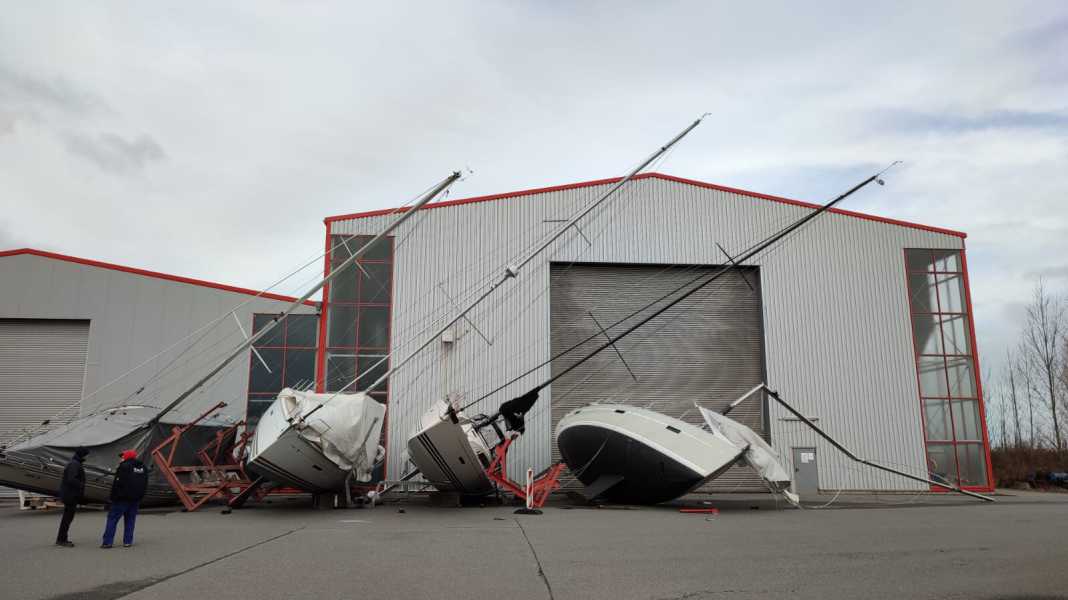
Since the middle of last week, several successive storm lows have hit the German coastal regions hard. On Saturday, hurricane "Zeynep" blew over four boats and their storage trestles on the premises of a winter storage operator in Rostock. A bilge keeler also fell over in Neustadt i. H. in a gust.
Zeynep" raged across the North Sea with widespread 12 Bft winds. The strongest wind was reported at the Alte Weser lighthouse with a maximum speed of 163 km/h.
"However, we hear relatively little from the North Sea. The damage is mainly from Flensburg to Rügen," reports Holger Flindt, Head of the Claims Department at Pantaenius Yacht Insurance. So far, around 30 claims have been reported. However, the insurer expects further reports until at least the middle of the week. Most of the claims are less dramatic.
However, Flindt has noticed a worrying trend: "Most ships fall over because they are standing on land with their masts up." He recommends lowering the mast in winter - not only because this results in less storm damage, but also because it is the only way to thoroughly check the rig for signs of wear. He also recommends that owners should always be prepared for the possibility of hurricanes and secure their boats accordingly at the end of the season.
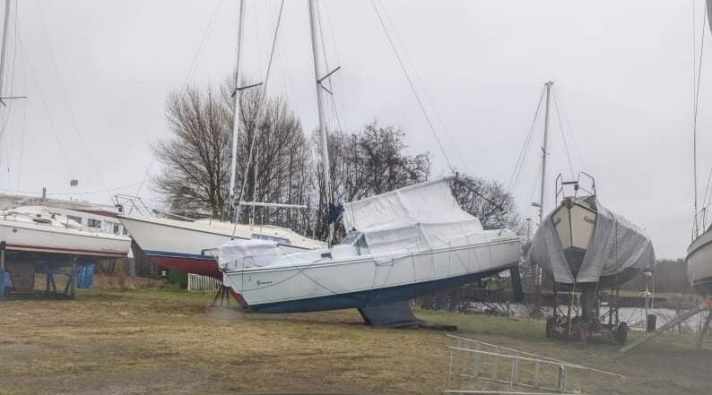
The shipyards on the North Sea confirm the insurer's impression: at the Hooksiel shipyard, only one chine keeler slipped slightly off the wooden blocks, but suffered no damage. "We checked all 180 boats in our external warehouse again before the storm and secured them if necessary," reports Bettina Kähler from the shipyard. "Only the cheap DIY store tarpaulins were all blown away. The customised thick truck tarpaulins, on the other hand, all held up."
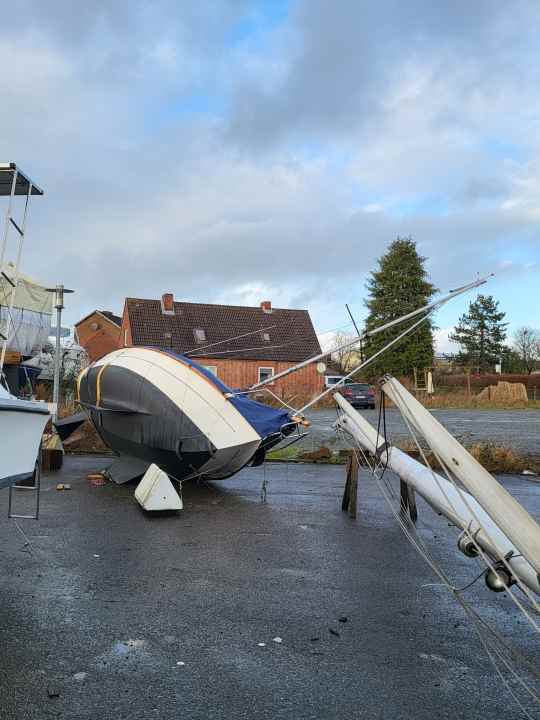
Klaas Kuhlmann from Nordsee-Yachting in Bremerhaven also has no damage to report apart from broken tarpaulins in the outdoor storage area. Nevertheless, in view of the storms that are expected to continue, he urgently recommends that all owners in outdoor storage check their ships in detail.
It is not only torn tarpaulins and their eyelets that can cause damage to your own and neighbouring ships. "When the mast is standing, the standing and running rigging is exposed to enormous loads," says Kuhlmann. "Hitting halyards and loosened shackles can cause some damage in the long term, but loose shrouds can, in the worst case, cause the mast to break in the next storm. If necessary, the boom should also be secured so that it cannot swing around."
Some marinas on the Baltic Sea have also given the all-clear. Thedje Ancker from the yacht centre of the same name in Kappeln on the Schlei reports that there was no further damage apart from a few torn tarpaulins. This is also confirmed by his colleagues from the Gelting Mole sports harbour and from Großenbrode.
However, Thedje Ancker points out that some care is needed to avoid damage. He makes sure that the ships are orientated to the west, i.e. to the prevailing wind direction. He also recommends always laying two-part tarpaulins in such a way that "the wind cannot reach underneath", i.e. the windward tarpaulin should be the last one - "just as you would cover a roof". He and his colleagues also frequently observe that the straps of the tarpaulins are attached to the bearing supports or the wooden wedges. In the worst case scenario, this can lead to the tarpaulins moving the supports and wedges under the ship in a storm.
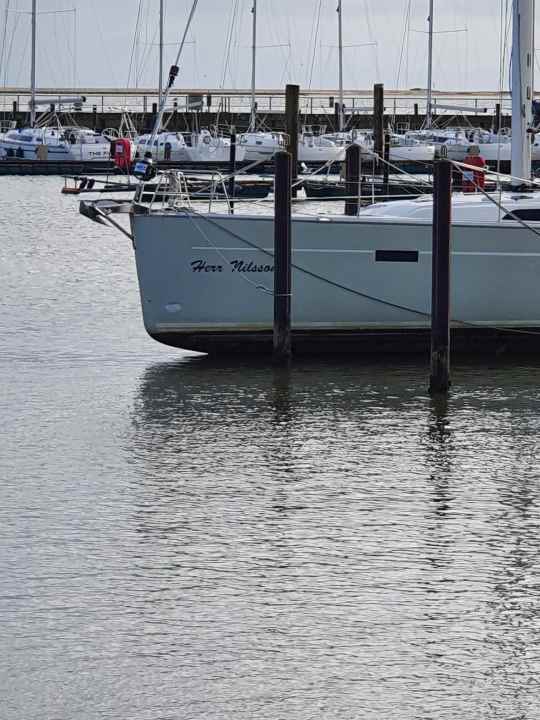
In addition to the strong winds, the extremely low water in the Baltic Sea also caused problems. Many ships were literally hanging in their mooring lines or were stranded. This can result in damage to the hull and keel.
Boat owners in neighbouring countries have also been hit hard. Holger Flindt from Pantaenius reports few damage reports from the IJsselmeer, but many from Denmark and Great Britain.
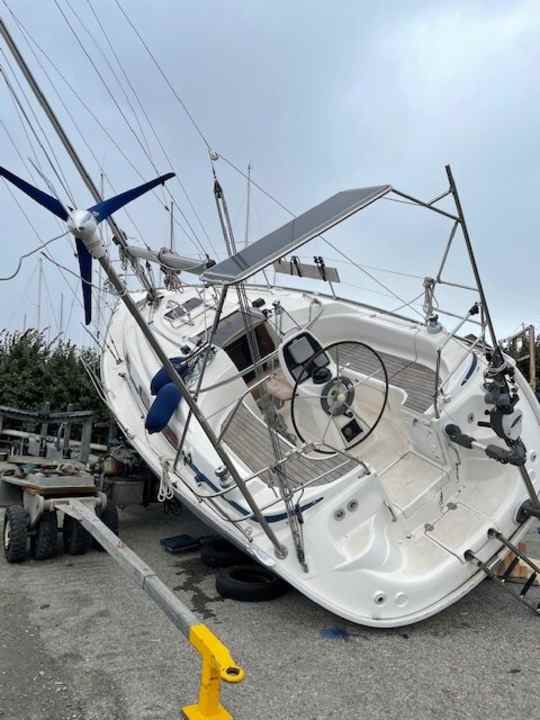
It will remain windy for the next few days. "In the night to Wednesday and also on Friday it will be windy to stormy again with gusts of 8 to 9 Bft", says meteorologist Sebastian Wache from the Kiel-based company "WeatherWorld" beforehand. "After that, however, a broad high will build up from next weekend and the situation will calm down more and more." Owners with boats in outdoor storage can then breathe a sigh of relief for the time being.

